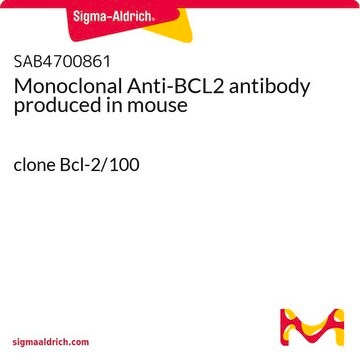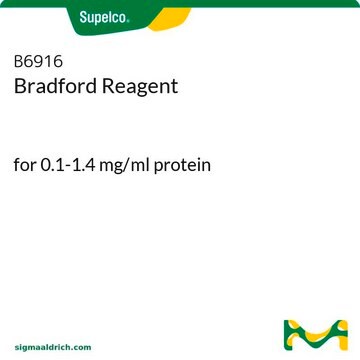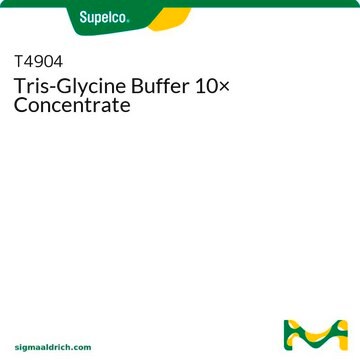05-729
Anti-Bcl2 Antibody, clone 100
clone 100, Upstate®, from mouse
Sinonimo/i:
B-cell CLL/lymphoma 2, B-cell lymphoma protein 2
Scegli un formato
CHF 543.00
Spedizione prevista il17 aprile 2025
Scegli un formato
About This Item
CHF 543.00
Spedizione prevista il17 aprile 2025
Prodotti consigliati
Origine biologica
mouse
Livello qualitativo
Forma dell’anticorpo
purified immunoglobulin
Clone
100, monoclonal
Reattività contro le specie
feline, canine, human
Produttore/marchio commerciale
Upstate®
tecniche
flow cytometry: suitable
immunohistochemistry: suitable (Paraffin)
western blot: suitable
Isotipo
IgG1
N° accesso NCBI
N° accesso UniProt
Condizioni di spedizione
dry ice
modifica post-traduzionali bersaglio
unmodified
Informazioni sul gene
human ... BCL2(596)
Descrizione generale
Specificità
Immunogeno
Applicazioni
Western Blotting Analysis: 1μg/mL of this antibody detected Bcl2 in Raji cell lysate.
Immunohistochemistry (Paraffin) Analysis: A 1:1,000 dilution of this antibody detected Bcl2 in Human tonsil tissue sections.
Qualità
Western Blot Analysis:
0.5-2 µg/mL of this lot detected Bcl2 in a Raji RIPA cell lysate.
Descrizione del bersaglio
Linkage
Stato fisico
Stoccaggio e stabilità
Handling Recommendations:
Upon receipt, and prior to removing the cap, centrifuge the vial and gently mix the solution. Aliquot into microcentrifuge tubes and store at -20ºC. Avoid repeated freeze/thaw cycles, which may damage IgG and affect product performance. Note: Variability in freezer temperatures below -20ºC may cause glycerol-containing solutions to become frozen during storage.
Risultati analitici
Tonsil tissue.
Altre note
Note legali
Esclusione di responsabilità
Raccomandato
Codice della classe di stoccaggio
12 - Non Combustible Liquids
Classe di pericolosità dell'acqua (WGK)
WGK 1
Punto d’infiammabilità (°F)
Not applicable
Punto d’infiammabilità (°C)
Not applicable
Certificati d'analisi (COA)
Cerca il Certificati d'analisi (COA) digitando il numero di lotto/batch corrispondente. I numeri di lotto o di batch sono stampati sull'etichetta dei prodotti dopo la parola ‘Lotto’ o ‘Batch’.
Possiedi già questo prodotto?
I documenti relativi ai prodotti acquistati recentemente sono disponibili nell’Archivio dei documenti.
Active Filters
Il team dei nostri ricercatori vanta grande esperienza in tutte le aree della ricerca quali Life Science, scienza dei materiali, sintesi chimica, cromatografia, discipline analitiche, ecc..
Contatta l'Assistenza Tecnica.







